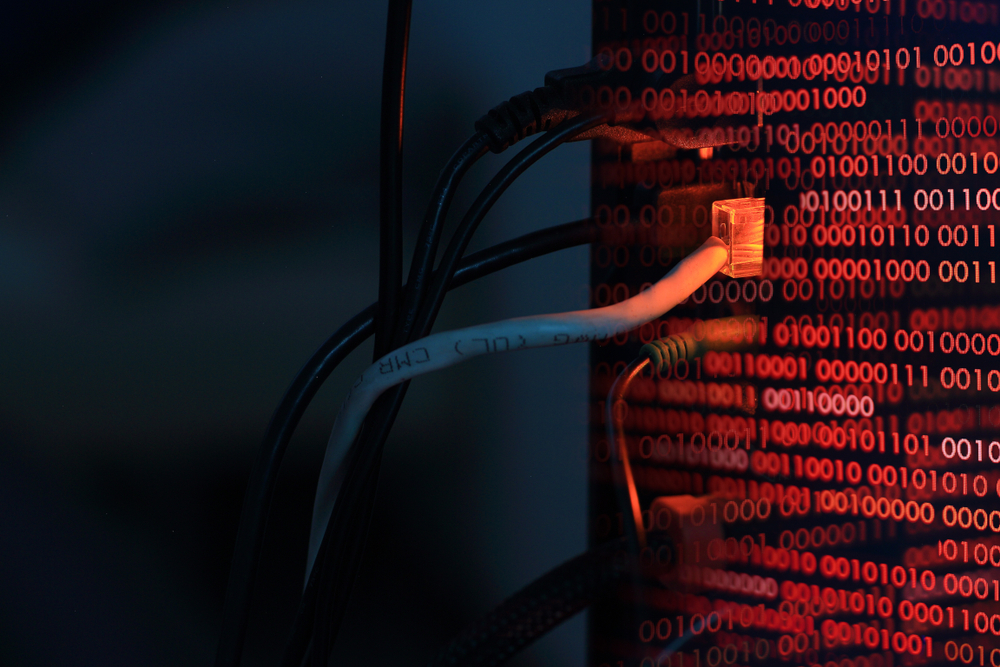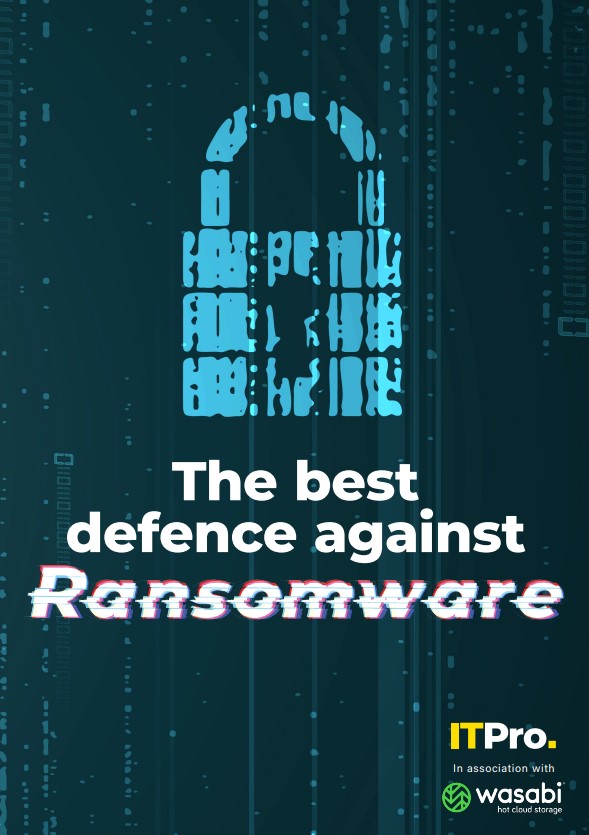QNAP ransomware victims dealt double blow as firmware update hampers decryption
Emisoft releases decryptor for victims while QNAP explains why and how it controversially auto-updated user’s products


QNAP users affected by the DeadBolt ransomware incident last week have been dealt another blow as users report being unable to decrypt their files after paying the ransom because the company's controversial forced update removed the ransomware's binary.
Now available to download, Emisoft’s decryptor works only for victims who have paid the ransom but were unable to acquire an official decryptor from the ransomware operators before their network-attached storage (NAS) drive updated. The forced security update QNAP issued last week isolated the DeadBolt binary, making it inaccessible to users, but needs to be accessible to fully decrypt the victim’s device.
"To make this abundantly clear: this will not get you around paying the ransom," said Fabian Wosar, Emisoft CTO, on social media. "Victims will still need to provide the key. It is merely an alternative decryption tool if you can't use the mechanism provided by the threat actors due to QNAP forcing a firmware update."
Official QNAP support explained to users over the weekend that the forced update triggered QNAP's Malware Remover tool to "quarantine" the DeadBolt ransomware rather than deleting it. A support representative said users can contact the QNAP helpdesk team to remove the DeadBolt page block and use a decryptor key, should they obtain one, to begin the file decrypting process.
It's currently unconfirmed if the Emisoft decryptor can be used in the decryption process described by QNAP support, but IT Pro has contacted both Emisoft and QNAP for clarity.
RELATED RESOURCE

The best defence against ransomware
How ransomware is evolving and how to defend against it
QNAP users were last week controversially subjected to a forced firmware update after a DeadBolt ransomware incident targeted and crippled thousands of NAS drives. Users expressed anger towards the Taiwan-based hardware firm for forcing the update without their permission and some argued their devices were left weaker than they were before.
Users reported losing large amounts of data after being hit with DeadBolt, including high-profile podcast host and MIT research scientist Lex Fridman, who lost 50Tb of data after being handed a 0.3 Bitcoin ransom demand (roughly £8,100 at the time).
Get the ITPro daily newsletter
Sign up today and you will receive a free copy of our Future Focus 2025 report - the leading guidance on AI, cybersecurity and other IT challenges as per 700+ senior executives
Explaining the fiasco
QNAP published a press release today explaining how and why the forced update was issued to all QNAP customers, adding that it still recommends not exposing NAS products to the internet.
The company explained that if the auto-update function for the 'Recommended Version' is enabled on a user's NAS drive, then the drive will automatically update to the firmware version QNAP believes to be the most secure.
User's originally expressed confusion as to why their product underwent an auto-update, having not manually enabled the auto-update setting. QNAP support explained that with firmware version 4.5.0 the feature was disabled by default, but was enabled in firmware version 4.5.3 with users thinking the setting would transfer unchanged after upgrading to the newer version.
"Recommended version does not apply to every update," said QNAP support. "So people did not realise recommended update was enabled on their NAS. But after Deadbolt, we released a recommended update to protect from deadbolt. Because this update was set as a "recommended version", NAS with "recommended version" enabled updated.
"Having recommended version enabled by default did allow us to protect many NAS units. But if anyone does not want this feature, they can disable it."
The company added that it understood services could be interrupted during the update and that it is always looking to improve its products. Users can find further information in QNAP's official statement.
Chief points of contention were echoed in response to today's announcement with some users saying Universal Plug and Play (UPnP), a set of networking principles allowing devices to discover others on a shared network, should be disabled by default. This will disable port forwarding and secure the device, for the most part, from attacks such as the DeadBolt incident.
Others reiterated their concern over the absent warning users were given that an automatic update was coming, while one complaint that QNAP said it would consider implementing, was that firmware versions should have been backported so fixes could have been applied to users on both versions 4.x and 5.x.
Ransomware recap
QNAP released a security update on 27 January for the DeadBolt ransomware campaign it said had been "widely targeting" users' devices for a number of days. This was automatically initiated for all QNAP customers sparking fury in the community.
More than 3,000 NAS drives were successfully encrypted with DeadBolt ransomware with ransom demands ranging between 0.3 Bitcoin to 50 Bitcoin for decryptor tools. Many individual and business users reported paying the ransom to restore access to their data at the time.
QNAP justified the forced update as a difficult but necessary decision to secure the majority of NAS products around the world, but users expressed anger towards the firm for issuing the automatic patch.
Many owners of NAS drives operate on older firmware versions for various reasons, and updating to newer, safer releases can be an arduous process given the highly individualised configurations running from user to user.

Connor Jones has been at the forefront of global cyber security news coverage for the past few years, breaking developments on major stories such as LockBit’s ransomware attack on Royal Mail International, and many others. He has also made sporadic appearances on the ITPro Podcast discussing topics from home desk setups all the way to hacking systems using prosthetic limbs. He has a master’s degree in Magazine Journalism from the University of Sheffield, and has previously written for the likes of Red Bull Esports and UNILAD tech during his career that started in 2015.
-
 Why keeping track of AI assistants can be a tricky business
Why keeping track of AI assistants can be a tricky businessColumn Making the most of AI assistants means understanding what they can do – and what the workforce wants from them
By Stephen Pritchard
-
 Nvidia braces for a $5.5 billion hit as tariffs reach the semiconductor industry
Nvidia braces for a $5.5 billion hit as tariffs reach the semiconductor industryNews The chipmaker says its H20 chips need a special license as its share price plummets
By Bobby Hellard
-
 Cleo attack victim list grows as Hertz confirms customer data stolen – and security experts say it won't be the last
Cleo attack victim list grows as Hertz confirms customer data stolen – and security experts say it won't be the lastNews Hertz has confirmed it suffered a data breach as a result of the Cleo zero-day vulnerability in late 2024, with the car rental giant warning that customer data was stolen.
By Ross Kelly
-
 ‘Phishing kits are a force multiplier': Cheap cyber crime kits can be bought on the dark web for less than $25 – and experts warn it’s lowering the barrier of entry for amateur hackers
‘Phishing kits are a force multiplier': Cheap cyber crime kits can be bought on the dark web for less than $25 – and experts warn it’s lowering the barrier of entry for amateur hackersNews Research from NordVPN shows phishing kits are now widely available on the dark web and via messaging apps like Telegram, and are often selling for less than $25.
By Emma Woollacott
-
 Healthcare systems are rife with exploits — and ransomware gangs have noticed
Healthcare systems are rife with exploits — and ransomware gangs have noticedNews Nearly nine-in-ten healthcare organizations have medical devices that are vulnerable to exploits, and ransomware groups are taking notice.
By Nicole Kobie
-
 Alleged LockBit developer extradited to the US
Alleged LockBit developer extradited to the USNews A Russian-Israeli man has been extradited to the US amid accusations of being a key LockBit ransomware developer.
By Emma Woollacott
-
 February was the worst month on record for ransomware attacks – and one threat group had a field day
February was the worst month on record for ransomware attacks – and one threat group had a field dayNews February 2025 was the worst month on record for the number of ransomware attacks, according to new research from Bitdefender.
By Emma Woollacott
-
 CISA issues warning over Medusa ransomware after 300 victims from critical sectors impacted
CISA issues warning over Medusa ransomware after 300 victims from critical sectors impactedNews The Medusa ransomware as a Service operation compromised twice as many organizations at the start of 2025 compared to 2024
By Solomon Klappholz
-
 Warning issued over prolific 'Ghost' ransomware group
Warning issued over prolific 'Ghost' ransomware groupNews The Ghost ransomware group is known to act fast and exploit vulnerabilities in public-facing appliances
By Solomon Klappholz
-
 The Zservers takedown is another big win for law enforcement
The Zservers takedown is another big win for law enforcementNews LockBit has been dealt another blow by law enforcement after Dutch police took 127 of its servers offline
By Solomon Klappholz